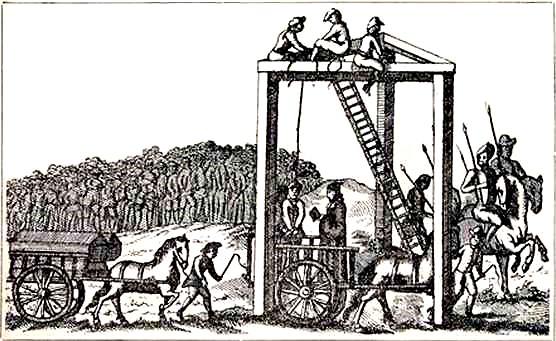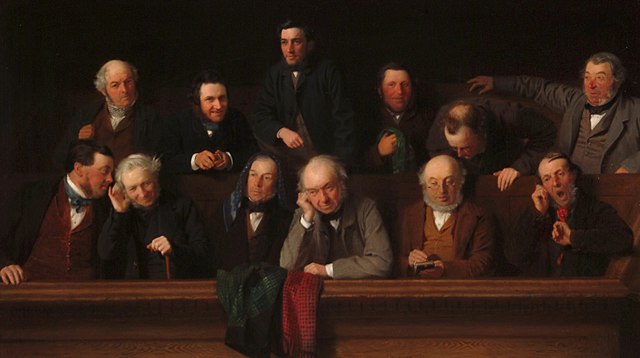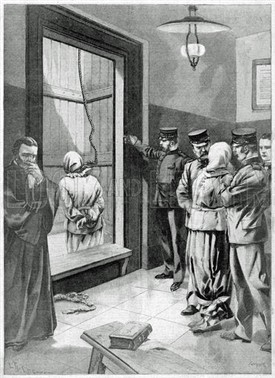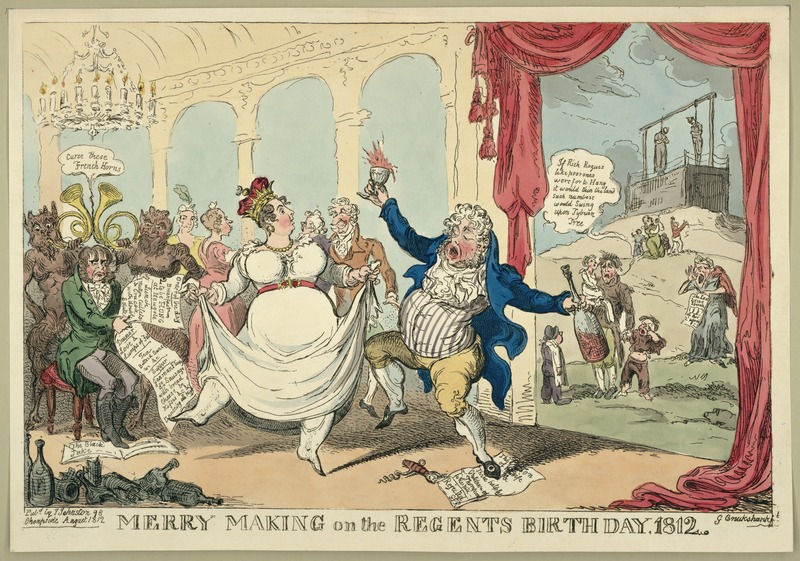Under Britain’s most notorious era of criminal law, you could be sentenced to death for everything from destroying a fishpond to being a particularly malicious 7-year-old. But how many criminals actually died thanks to this wave of harsh legislation? Getting the answer requires a deep dive into the very weird world of crime and punishment in the industrializing United Kingdom.
Featured image: George, the Prince Regent, parties while his common subjects are shown destitute and dying on the gallows outside. The poor man outside is giving a statement about the fairness of the law: “If rich rogues like poor ones were to hang, it would thin the land such numbers were to swing on Tyburn tree.” By 1812, the time this print was made, the official place of execution for felons had been moved to Newgate Prison and the infamous “Tyburn tree” would have been replaced by moving gallows. (Image source)
Content note: This episode is about capital punishment in British law and will include a lot of information about the state executing convicted criminals. The show notes contain images of hangings. I’m sticking with our general policy of choosing illustrations for our show notes instead of photographs of dead bodies.

An illustration from the 1680s of the Tyburn tree. (Image source)

John Smith, known as “Half-hanged Smith” for one of his most dramatic near-death experiences, was convicted three times. The first time, he was hanged, but when he did not die after a quarter of an hour a reprieve was granted and he was cut down. He was set free due to complications after a second trial, convicted in a third but freed again when the prosecutor died before sentencing, and finally convicted for stealing a padlock and transported to Virginia. (Image source)

A hanging outside Newgate Prison. (Image source)

An 1861 painting of an English jury. (Image source)

The execution of notorious female murderers at Holloway Prison in 1903 shows how much reformers changed the criminal justice system in the later 1800s. While executions were still legal, the list of capital crimes had shrunk, and these murderers are being held in a prison specifically for women and executed in private rather than being hanged in front of a crowd. (Image source)
Sources
Pre-1700s laws
- 7 Obscure Medieval Laws
- Royal Acts of Mutilation: The Case against Henry I
- Courts & Justice in Tudor England
- Two myths in the history of capital punishment
- Prisoners and Bail Act 1275
- The Elizabethan cost of living
- The time traveller’s guide to Elizabethan England
- MAGNA CARTA AND THE RIGHT TO TRIAL BY JURY
- Jews in Thirteenth Century England
The Bloody Code and related history
- Rethinking the Bloody Code in Eighteenth-Century Britain: Capital Punishment at the Centre and on the Periphery
- 1723: 9 George 1 c.22: The Black Act
- National Justice Museum on the Bloody Code
- The Bloody Code: 20 Crimes That Absurdly Led To The Death Penalty in Georgian & Regency England
- A Character of King Charles the Second, by George Savile, Marquis of Halifax
- Crime and punishment in Industrial Britain, c.1750-c.1900
- 18th-century Britain, 1714–1815
- South Sea Bubble
- The South Sea Bubble, 1720
- The Waltham Blacks and the Black Act
- 1723: 9 George 1 c.22: The Black Act
- English Criminal Justice Administration, 1650-1850: A Historiographic Essay
- Execution and Pardon at the Old Bailey 1730-1837
- Forgery and the End of the ‘Bloody Code’ in Early Nineteenth-Century England
- Decision-Makers and Decision-Making in the English Criminal Law, 1750-1800
